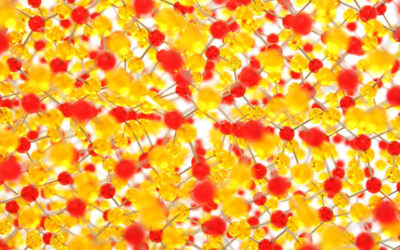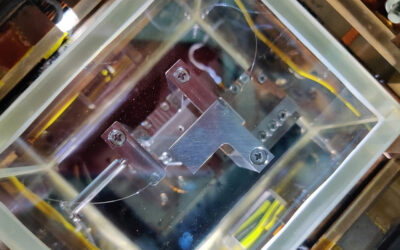Researchers have developed a new method to manufacture quantum computer chips using highly-purified silicon that could significantly reduce the error rate of quantum computers. This marks a major milestone towards making large-scale quantum computers a reality.
“Quantum computing will transform our world through the range of problems it will allow us to address, from designing individualized drugs to discovering ways to tackle climate change. To do this we need to build a large-scale quantum computer,” said Ravi Acharya, researcher at the University of Manchester and the University of Melbourne and first author of the study.
However, quantum computing technology is still in the early stages — it will take years until it can fulfil its potential. One of the main challenges scientists need to overcome in order to get there is that current quantum computers have a high rate of calculation errors.
These errors occur because the qubits — the basic computing unit of quantum computers — are extremely sensitive to tiny changes in their environment. Currently, qubits can hold information without errors for only a fraction of a second.
The new method developed by Acharya and his colleagues could significantly increase the time qubits can accurately hold information for, reducing their error rate and paving the way towards making accurate quantum computers at scale.
Purifying silicon microchips
In the study, the scientists used qubits made of phosphorus atoms implanted into silicon crystals. One of the critical sources of errors in this type of qubits comes from the composition of the silicon chips that house and protect the qubits.
In nature, silicon is made of three isotopes — atoms of the same element with different numbers of neutrons in their nucleus. These are silicon-28, silicon-29, and silicon-30.
“In silicon, the qubit quality is significantly reduced by the presence of the naturally occurring silicon-29 isotope,” explained Acharya. While they only make up about 4.7% of silicon in nature, silicon-29 isotopes have an extra neutron that is responsible for creating computing errors.
The goal was to purify the silicon chips to only contain silicon-28 isotopes, which normally makes up about 92% of natural silicon. The researchers used a technique called ion beam implantation to accelerate silicon-28 ions onto commercially available silicon chips, implanting the silicon-28 and replacing the silicon-29.
The result was a highly purified silicon-28 chip where the presence of silicon-29 was as low as 2.3 parts per million — the lowest reported to date.
“The unique aspect of our method is that this isotopically pure silicon can be directed on-demand, thus only those regions of silicon where qubits will be placed need to be processed, saving significant time and energy,” said Acharya.
In addition, the method did not result in contamination of the silicon chips with other elements, such as oxygen or carbon, which was a problem in earlier studies.
According to the authors, a key advantage is that the method used is scalable and cost-effective, and the equipment — an ion implanter — is already commonly found in labs that fabricate microchips for classical computers.
“We needed to take into account how the method could be scaled in the future to allow the manufacturing of a large-scale quantum computer. This required the use of a process that is compatible with existing silicon processing,” said Acharya.
Making error-free quantum computers
This research lays the foundations to fabricate the materials necessary for high-quality qubits, said Richard Curry, professor of advanced electronic materials at the University of Manchester. He estimates that this new method could extend the time qubits can hold on to information without errors from about one millisecond in natural silicon to around ten seconds in purified silicon.
The next step will be to assess the effect of the highly-purified silicon chips on the performance of small-scale qubit systems.
“A single qubit device based on this material can be readily implemented now,” said Curry. “Multi-qubit devices will emerge in the next year or so but a one million qubit computer, generally thought to be required for error corrected quantum computing, is still a good few years away but becoming visible on the horizon.”
Quantum computers are still in development, and there are currently multiple approaches to building the qubits inside them. Silicon-based qubits, such as the ones used in this study, have the major advantage of using materials and techniques that are already commonplace in the manufacturing of silicon microchips for classical computers.
“One of the drivers for developing a silicon-based qubit system is to leverage from the decades of knowledge in device scaling gained from microelectronics research,” said Curry. “Ensuring that our method was compatible with future manufacturing was an important driver, hence our turning to ion implantation which is commonly used by the microelectronic industry.”
This new method is a major milestone for silicon-based quantum computers towards the goal of making reliable and scalable quantum computers. “Without our research it would be unlikely that a silicon-based quantum computer would be competitive with alternative quantum computing systems,” added Curry.
In the future, he expects a number of approaches to quantum computing to be used in large-scale quantum computers, possibly with hybrid systems that combine different approaches. “It is likely that each will find its niche for addressing particular types of problems and they will co-exist,” Curry concluded.
Reference: Ravi Acharya et al., Highly 28Si enriched silicon by localised focused ion beam implantation, Communications Materials (2024). DOI: 10.1038/s43246-024-00498-0

















